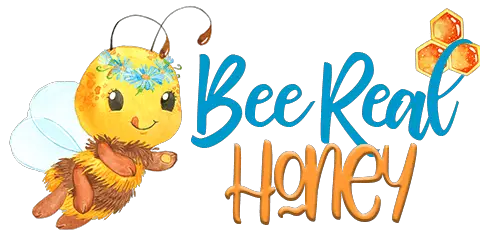*This post may have affiliate links, which means I may receive commissions if you choose to purchase through links I provide (at no extra cost to you). As an Amazon Associate I earn from qualifying purchases. Please read my disclaimer for additional details..
Belonging to the family Liliaceae, lilies are native to temperate areas of the Northern hemisphere.
This perennial plant has flowers consisting of six petal-like segments with an elongated tube.
They have leafy stems, narrow leaves, and solitary or clustered flowers. Lilies come in a lot of different colors and are quite fragrant.
Do bees like lilies?
In general bees like and are drawn to lilies for their nectar and fragrance. The lily flowers are extensive producers of nectar and this sugary fluid, along with pollen, attracts different insects including bees and butterflies.
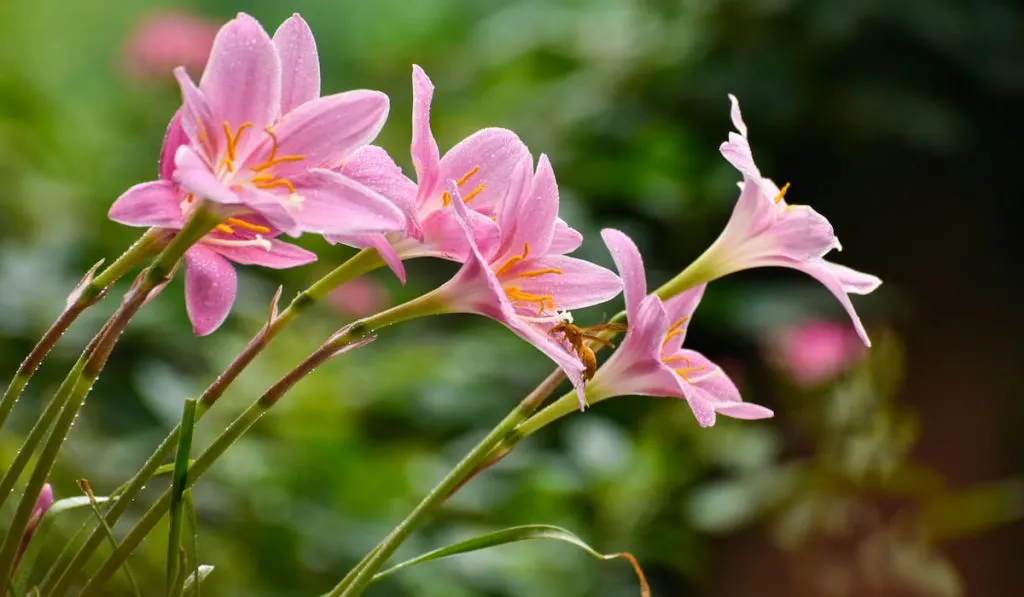
Bees get nectar and pollen from lily flowers while, in turn, helping in pollination.
Pollination is the transfer of pollen from flower to flower, fertilizing the plant and initiating their reproductive cycles.
Not every flower is liked by every bee species. So let’s find out which bee species are attracted to lily flowers.
Table of Contents
What Different Bee Species Like Lilies?
Honey Bees
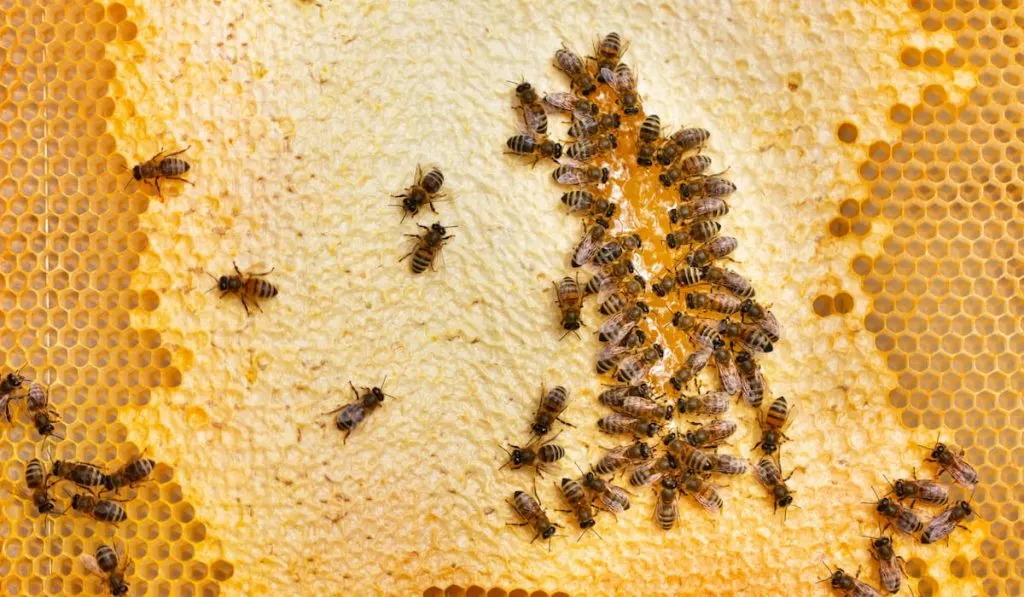
The main goal of honey bees is to produce honey for their young ones and the queen bee.
For that, they require a good amount of nectar and pollen. As lilies are rich in nectar and pollen they are well frequented by honey bees.
Rich in pollen, lily flowers help fulfill the protein need of the honey bees: 3-4 mg of pollen per day.
The Lily pollen helps fulfill the energy requirements of honey bees and the strong fragrance and bright white color attract the honey bees to the flowers.
Carpenter Bees
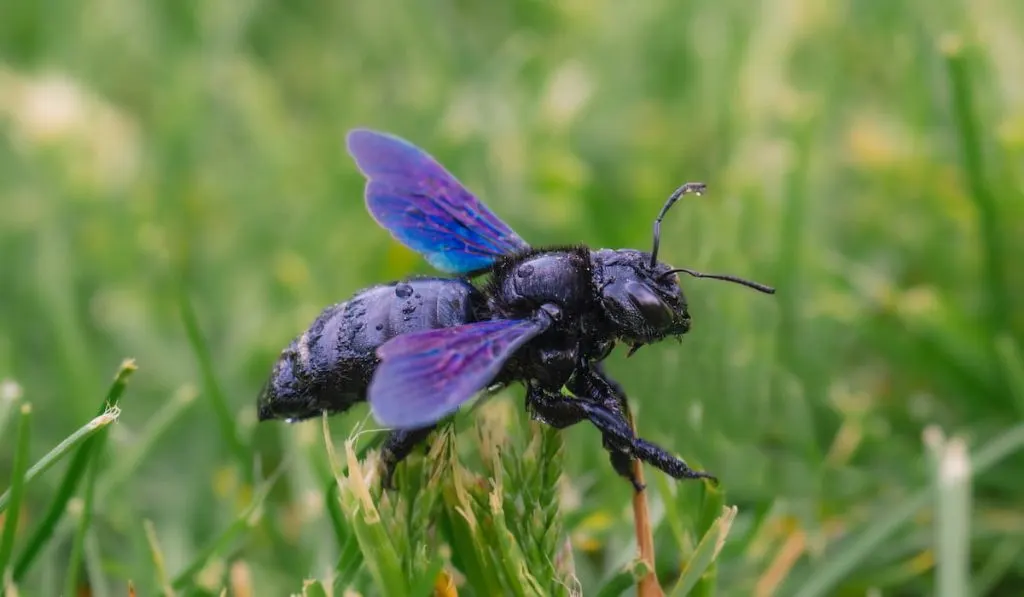
Carpenter bees are different from honey bees. They spend their lives in holes excavated in wooden logs and trunks. They prefer living solitary lives and do not produce honey as honey bees do.
As the carpenter bees are not living groups they do not require nectar as much as honey bees require.
They only have to make nectar/pollen loaves for their young ones and no one else.
Due to their large size, carpenter bees cannot feed on small compact flowers.
For that reason, lilies are a great option for carpenter bees. Their open flowers loaded with pollen are loved by carpenter bees.
Bumble Bees
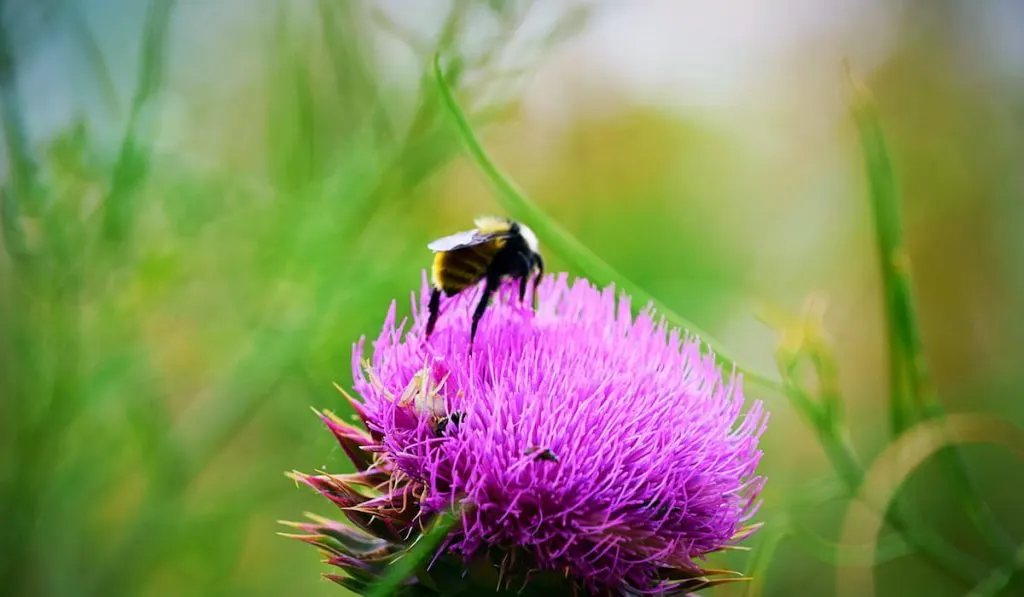
Bumblebees are attracted to lilies for the same reasons as carpenter bees.
Firstly, they do not require too much nectar as they do not produce surplus honey, although pollen is still required to fulfill their daily protein needs. So pollen-rich lily flowers are a great option for bumblebees as well.
Secondly, the robust bumblebees prefer flowers with less compact petals as in lilies. This makes it easier for the bumblebee to enter the flower and reach the pollen grains and nectar.
The strong odor of lilies attracts bumblebees even from far away.

Do Bees Pollinate Lilies?
Bees do pollinate lilies. Bees along with other insects are the primary pollinators of lily flowers.
Bees are attracted by the fragrant lilies with rigid, inflexible stamens and anthers.
Bees are the primary pollination assistant for lily flowers.
In search of nectar and pollen, when bees jump from flower to flower they also take along pollen from the stamens to the pistils.
The pollen gets attached to the stigma and then moves down the style into the ovary. Then the process of seed formation begins.
3 Favorite Lily Varieties for Bees
1. Lemon Daylilies (Hemerocallis Lilio-Asphodelus)
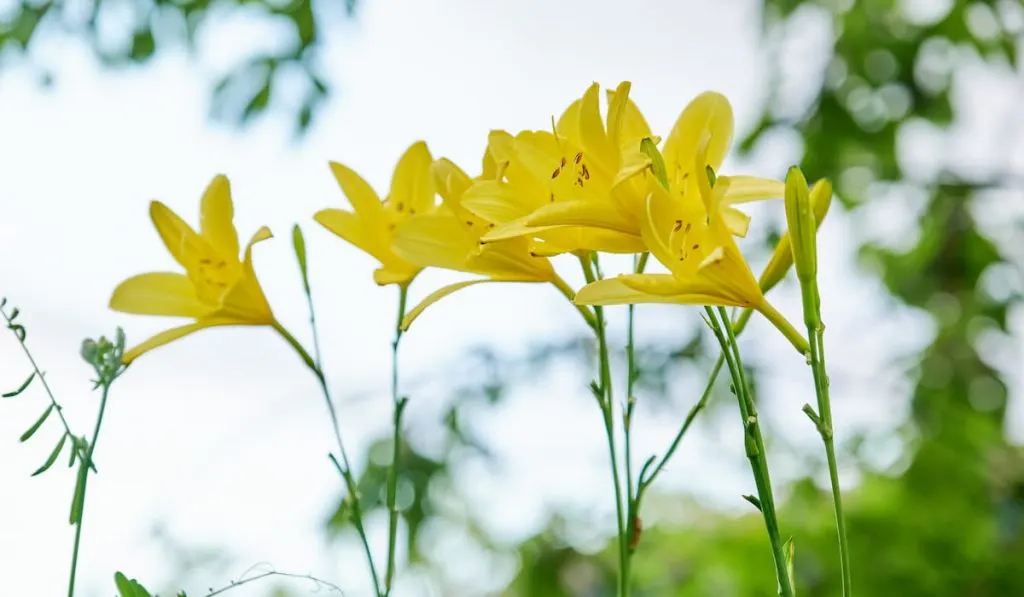
Lemon daylilies can be a beautiful addition to your garden that attract bees.
It is highly valued for its early bloom period, starting from late spring till the early summer, and for its scented flowers.
Its flowers are lemon yellow, trumpet-shaped, and rise from a clump of green leaves.
Each flower is replaced by a new one every 24 hours. Lemon daylilies multiply quickly and are a great naturalizer.
They require full sun and well-drained soil to thrive. They are heat and humidity tolerant to some extent and can perform well in a wide range of soils as well.
Early fall or early spring are the best times to plant lilies. To improve the appearance and for encouraging rebloom, always remove the spent flowers.
These bright yellow flowers attract many bees and butterflies. Honey bees and bumblebees love them for their color, fragrance, and nectar.
2. Yellow Fawn Lilies (Erythronium grandiflorum)

As winter extricates its chill, the merry blossoms of yellow fawn lily welcome in spring to lower regions and mountain districts in the West.
Yellow fawn lily is once in a while called “dogtooth violet” even though it’s doesn’t look anything like a violet.
This species is otherwise called “glacier lily” since it regularly shows up at the edge of subsiding snowbanks.
Other normal names it goes by are trout lily, snow lily, and avalanche lily.
In the same way, like other of its family members in the Lily Family, the petals and sepals resemble each other and are called tepals.
The yellow blossoms comprise six petal-like tepals that bend back, uncovering the stigma and white, red, or yellow stamens.
One to three pompous blossoms hang at end of the stalk that can reach up to 12 inches in height.
3. Cat’s Ear (Calochortus luteus or monophyllus)

Calochortus luteus is a type of blossoming plant in the lily family known by the common names elegant Mariposa lily and cat’s ear.
It is a local plant of the western United States from northern California to Montana.
It is a perennial herb-producing and slim, for the most part, unbranched stem up to 6 inches tall. The basal leaf is 4 to 8 inches long and doesn’t shrink at blooming.
It bears 1 to 7 erect blossoms. Each blossom has three sepals and three petals with exceptionally furry internal surfaces and edges.
Every petal is greenish-white in shading with a purple bow over a bald patch at the base. Its beautiful appearance and scent are loved by bees, butterflies, and many other insects.
